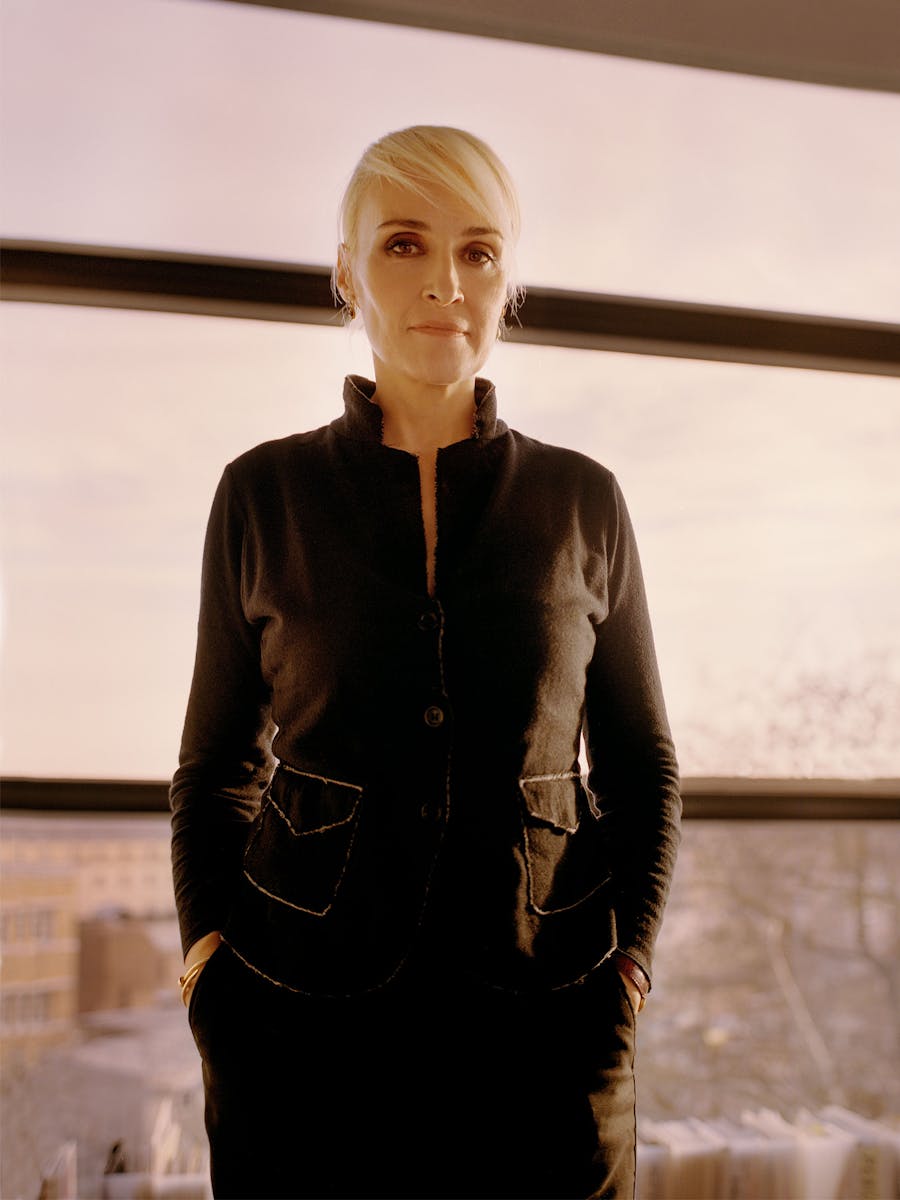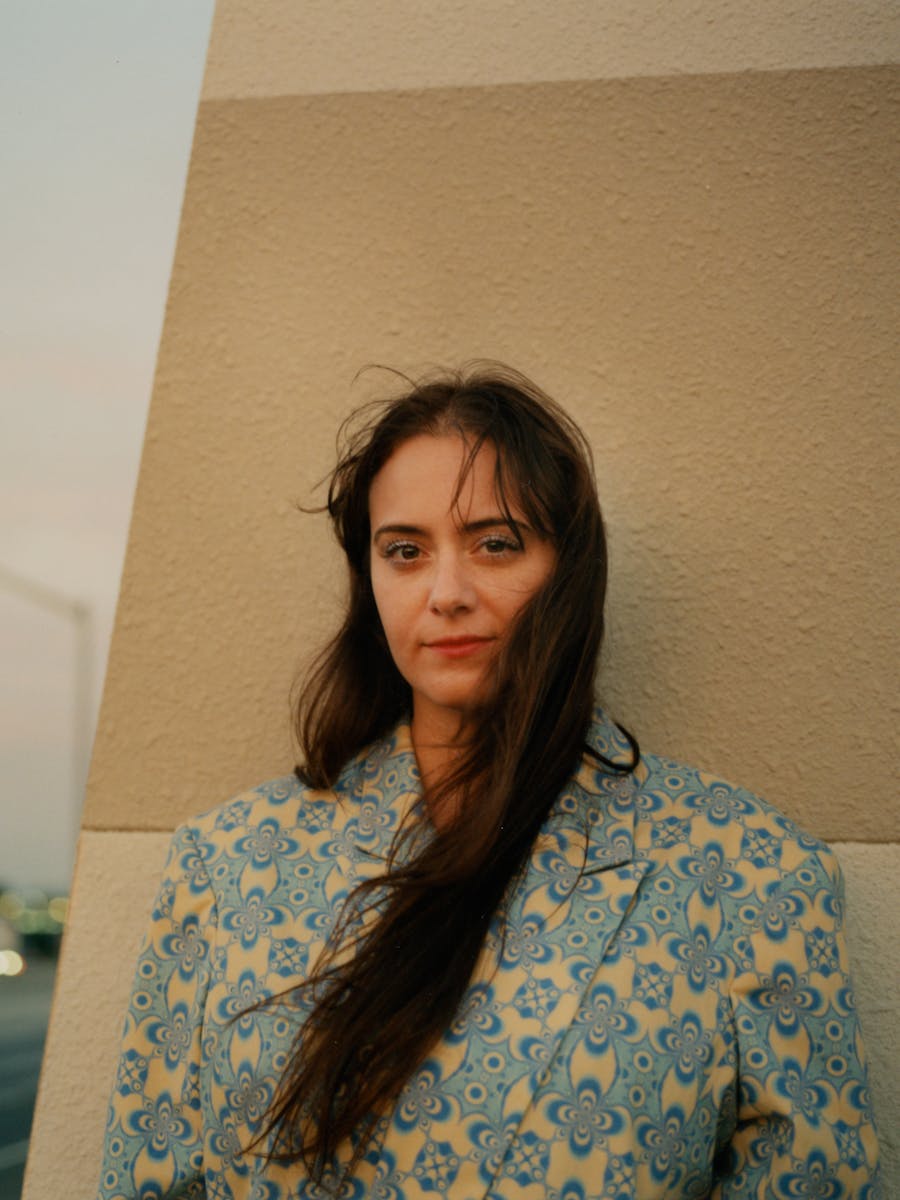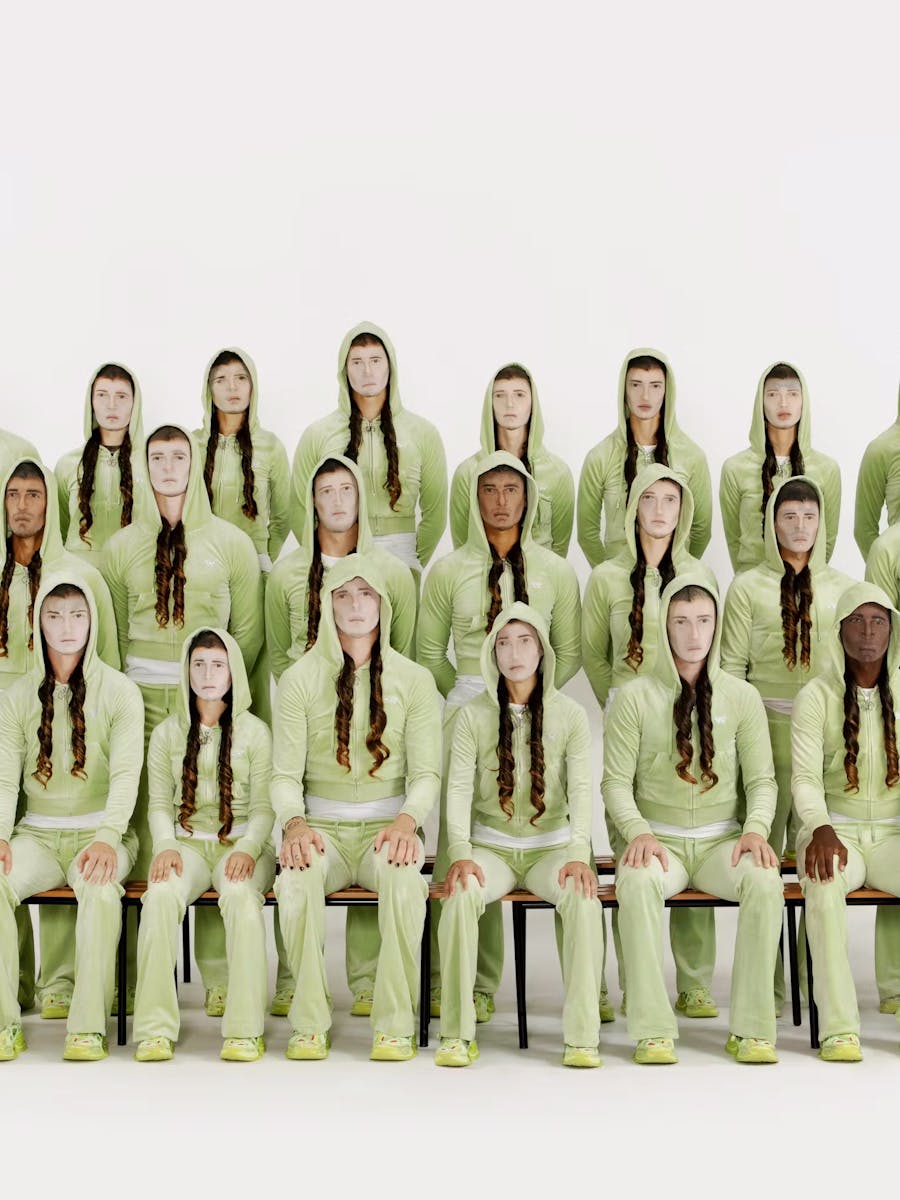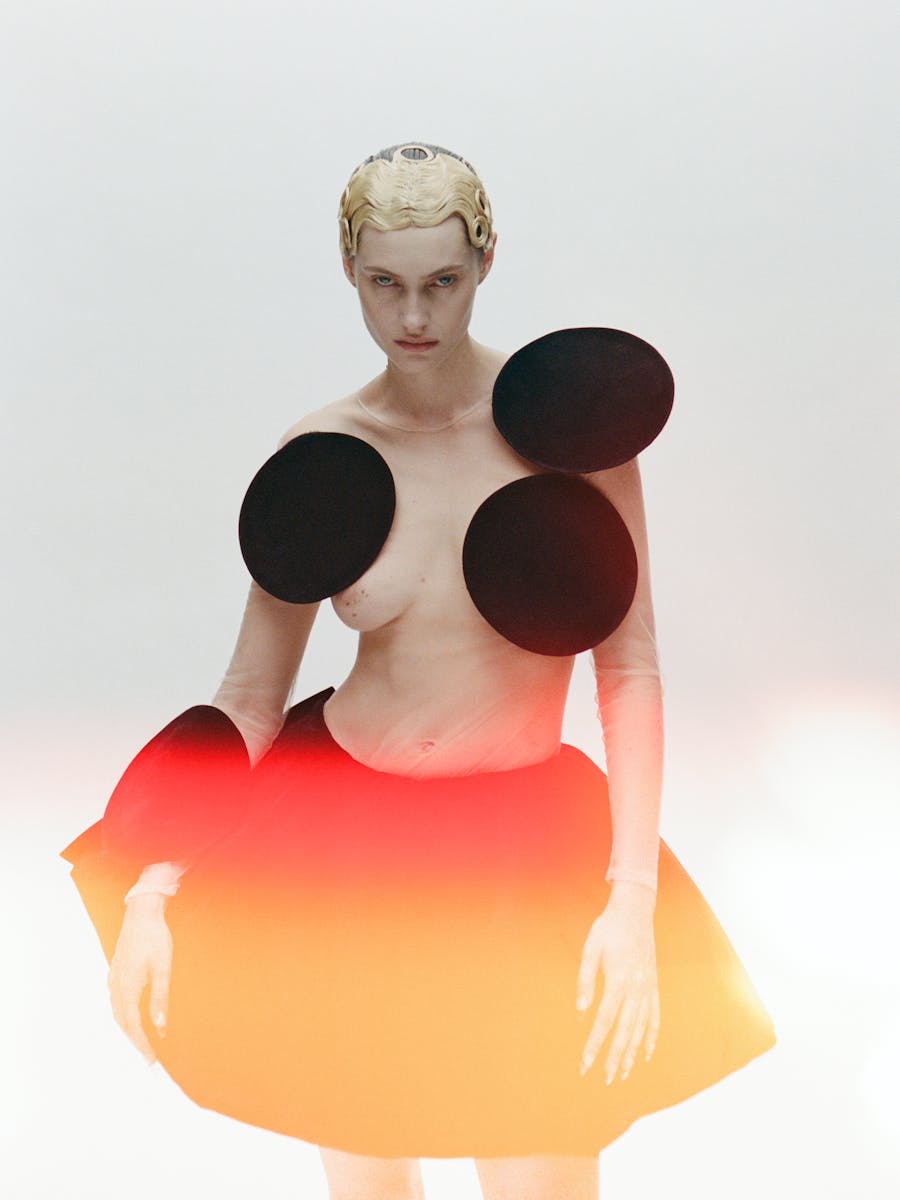From The Craft Issue
Step into the world of Japanese brand Sacai through the intertwined vision of its founder, Chitose Abe, alongside journalist and creative mind Dan Thawley.
For decades, the oft-generalized idea of Japanese fashion has — like the Belgians — set a precedent and perhaps even a self-fulfilling prophecy of an anti-establishment, anarchic design language. Black, aggressive, poetic too, but often veering towards a beauty that philosophically suggests a vein of ‘otherness’. The push and pull of Eastern and Western ideals within these aesthetic schools is potent — as ideas of uniforms and codes have been deconstructed (exploded even) by Yohji Yamamoto, Rei Kawakubo, Issey Miyake and their many disciples.
Despite having transitioned through the ateliers of Comme des Garçons herself, the independent designer Chitose Abe has achieved an uncanny sidestep, creating Sacai — a brand that since 1999 has evaded singular classification to embody a new international glamour whilst narrowing the gaps between street and formalwear. Remaining loyal to a concept of ‘hybridization’ by constructing garments that fuse together recognizable signatures of archetypal clothing, she has created a perpetually evolving language that can be applied to all manner of objects: from trench coats paneled in lace or cargo pants with tuxedo trims, to triple-soled trainers and two-handled mugs. A voracious appetite for collaborations has propelled Abe’s ingenuity to new heights, as she and her loyal teams apply the Sacai principles of ‘chaos and order’ to all manner of brand alignments, as likely borrowing artworks from the likes of Lawrence Weiner or Man Ray as challenging sport or streetwear brands from Moncler to Levi’s with their cut-and-paste methodologies.
Though still based in central Tokyo and making seasonal trips to Paris for her dedicated women’s shows and co-ed shows on the men’s schedule, there is an undeniable sense of the global in Abe’s approach to the fashion system. From her choice of the British super stylist Karl Templer to a longstanding musical partnership with Lagerfeld-favourite Michel Gaubert, there’s a high-fashion edge to Sacai that goes against the grain of the lo-fi, anti-fashion approach of the aforementioned Japanese first-wave designers. Unlike them, her fashion shows are as likely to feature a rainbow of cube stools and a labyrinthine catwalk of models rushing by in multiple directions as strobing light effects and a choppy upbeat soundtrack of garage hits and of-the-moment pop songs - all tropes far from the melancholic and aggressive anti-fashion approach to presentations favoured by her predecessors. The sense of optimism and dynamic energy she instills in her fashion shows is infectious and marries well with the playful sense of exaggeration that lends many of her creations that sense of ‘it factor’ — not unlike the 3% rule that her late contemporary Virgil Abloh so often cited as the slight shift needed to create something new from something old.
In late June, we sat down for this interview in Sacai’s new Paris headquarters — a historic fashion studio in the 6th arrondissement with a light-filled atrium and a rabbit warren of ateliers, a stone’s throw from the A.P.C. fiefdom of the rue Madame. All giggles and smiles in her signature black T-shirt and jeans, Chitose thinks carefully before each response, listening attentively to my English whilst considering each reply in her expressive Japanese. Our stop-and-start chat in the two languages, translated diligently by her long-time communications maven Kaori, reminds me of her creations: existing somewhere between worlds, shifting from one culture to another. A little chopped up, somewhat naïve, honest, thoughtful and kind.
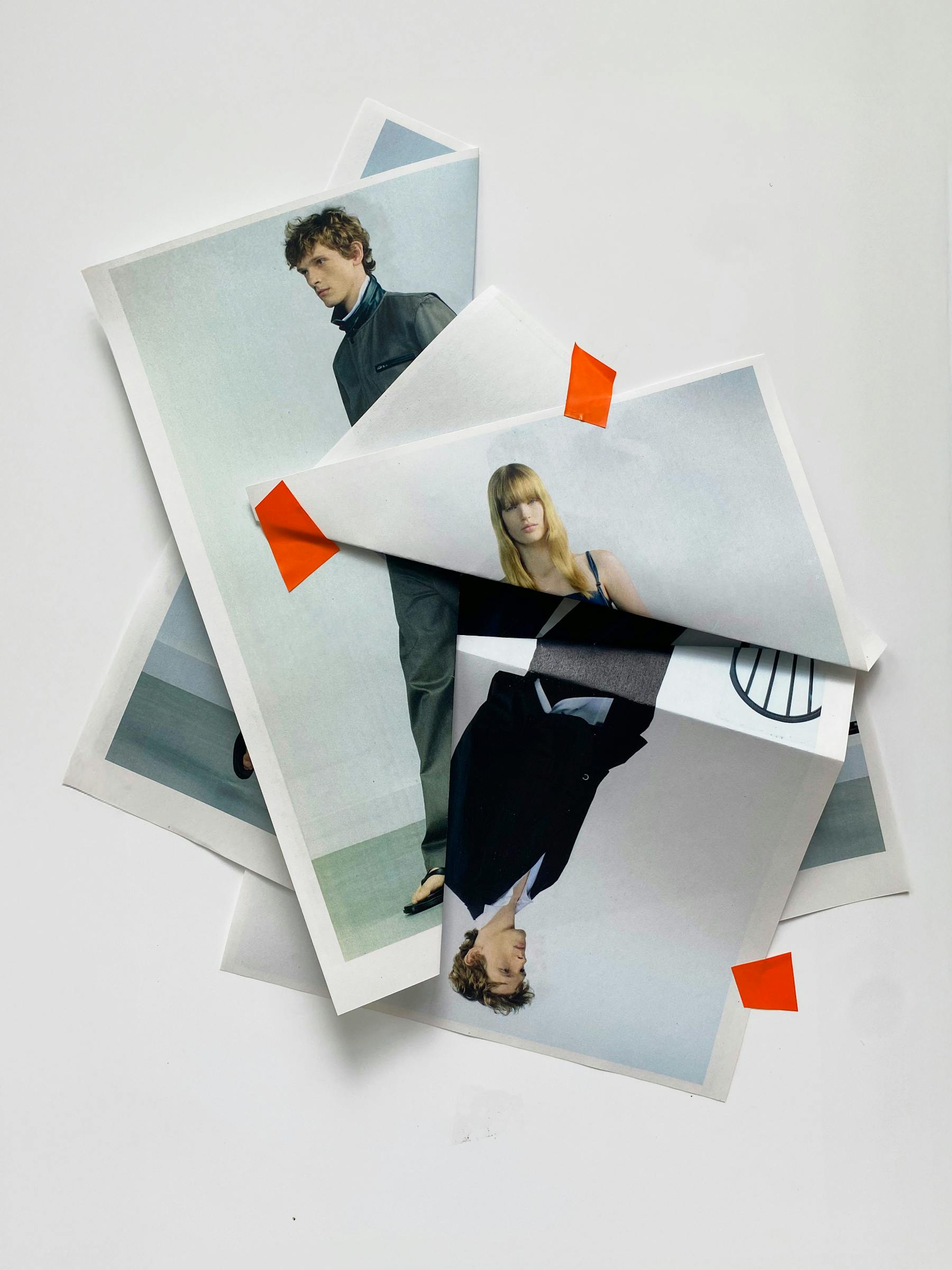
DAN THAWLEY A good place to start would be Sacai’s new Paris headquarter, along with the Men’s Spring/Summer 2026 and Women’s Spring 2026 collections that you presented outside of the runway shows. Why did you choose to stage a presentation mixing furniture and fashion together?
CHITOSE ABE We've been making clothes for a long time now. For the past few years, we've been doing runway shows with specific themes, but there are various ways of showing a collection. I felt that now was a good moment to show the world who we are in a new way. Our clothes are easier to understand if you see them closely and can touch them. So we shared them in a presentation format to explain the brand and demonstrate that the clothes we make are based on our daily life. The concept of Sacai is "every day, all day."
D. T. Could you tell us about this new HQ here in Paris? Already it feels like a welcoming space, you have hosted events with food and games like the ‘Matsuri’ market, and a karaoke night!
C. A. We are an independent company. Being independent is not an easy thing without having big support from friends around the world. So we wanted to make this space not just about the office, but also a place to welcome people and share our gratitude. It's kind of like a Sacai house. That was the reason why we tried not to have big brand events here but instead to share intimate moments with people that support us. We're not a mega-brand, so there are some limitations to how we can show who we are in a unique way.
D. T. This building is very special. It has a long history in fashion as a studio space, from Jean-Charles de Castelbajac to Balenciaga under Nicolas Ghesquière and Stella McCartney, all big, interesting names. And now it is your turn. To that effect, I wanted to ask about that idea of Sacai as an international brand, as I've always appreciated how the landscape of Sacai rarely feels fully Japanese. It seems that you have references from America, from the UK, and from European fashion and culture.
C. A. I don't do any social media. I don't know many celebrities. When I am designing and creating, I am not really inspired by what's going on in the world, meaning it comes from within myself or through working on specific designs. There are so many brands in the world now; what is important is to always be original and true to oneself. There always has to be a reason for Sacai to exist in this market. I think many people have specific expectations about Japanese designers. Sacai is different from that. One of the reasons is that many Japanese brands work locally, whereas from the beginning I have worked internationally. I am always open to hearing different kinds of opinions. I am very open-minded, and maybe that's what has led us to the unique position we are in.
D. T. There is a lot of loyalty around Sacai. It feels like that has helped the growth of the brand in a very organic way. I wanted to ask about how you stay true to your style even while you integrate many collaborations with companies that are experts in a specific field. Do you remember the very earliest projects you did where Sacai joined with another brand?
C. A. It was with Nike. Fraser Cooke has been a great friend to us. He was the one who connected strongly with the partnership. It started as a friendly conversation and then led to a long-term partnership. The first time I did a collaboration, I worried about whether the spirit of the brand would be compromised or misunderstood. At the time, there weren't many collaborations. I had my guard up. Now, I feel very confident in the mutual respect that we have for one another, and here we are.
D. T. You work with companies that are masters of a single craft, whether it's Levi's with denim, Carhartt with streetwear, or Ugg and J.M. Weston with footwear.
C. A. We always look to brands that have the right expertise and allow us to make something completely new through Sacai. We are specific about who we choose to partner with for a collaboration.
D. T. You play with archetypes of clothing, don't you? Many brands try to make a shoe or a pair of jeans or something that feels a bit like the classic. Do you think it's better sometimes to work with the classic, with the brand that does it best?
C. A. When I started the brand, I was wearing very simple clothes like short-sleeve cardigans. I liked those pieces, but I wanted to dress differently from others. That's how I built the concept behind Sacai. The classic pieces are really important to us.
D. T. To me, Sacai is the poster child of postmodern fashion. Many brands are nostalgic all the time for the past, always revisiting different periods of time and culture. You take pieces apart and surprise us with new garments that explore silhouette and materials. And I think that's very interesting. You remix. You make new things.
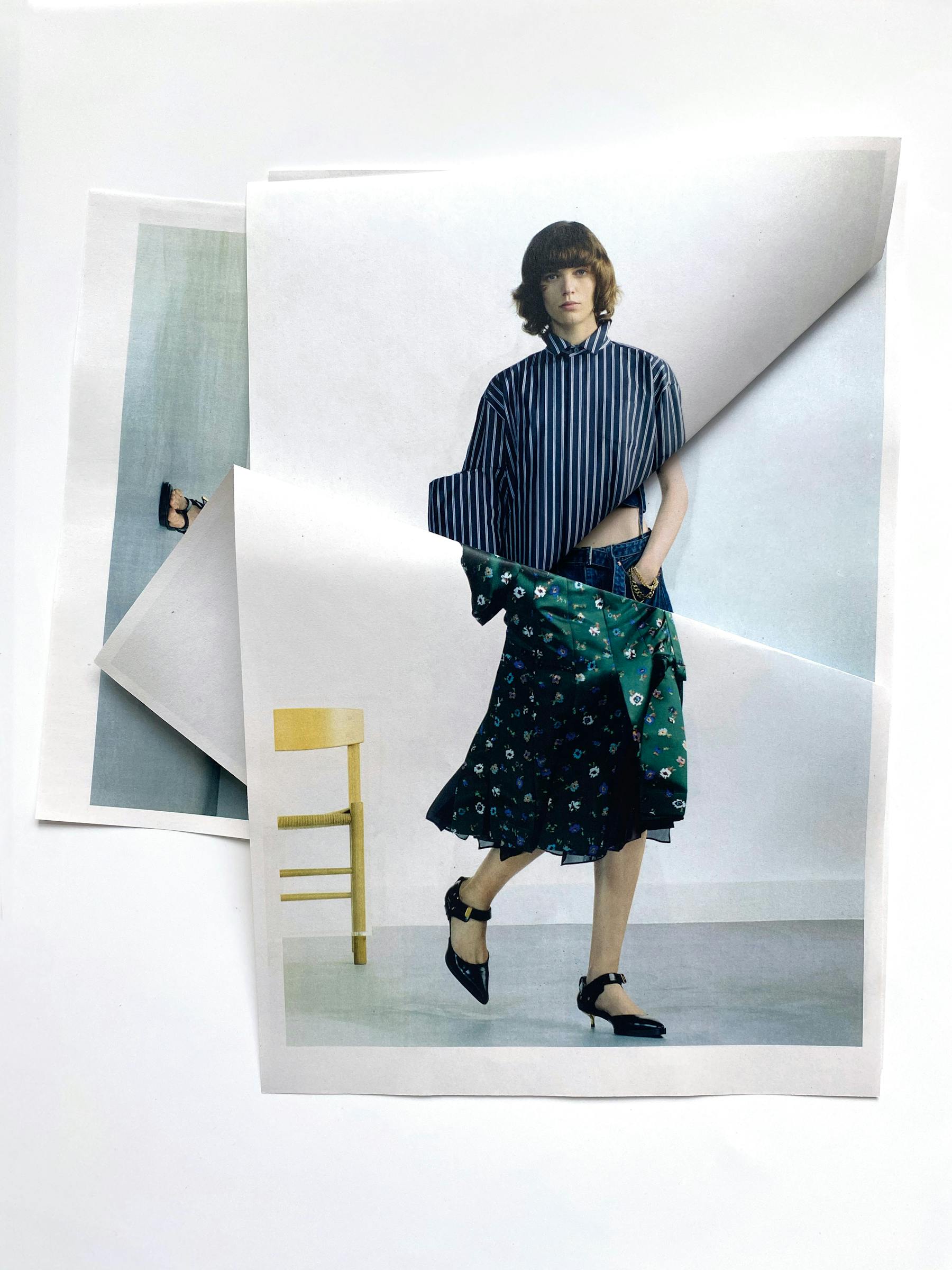
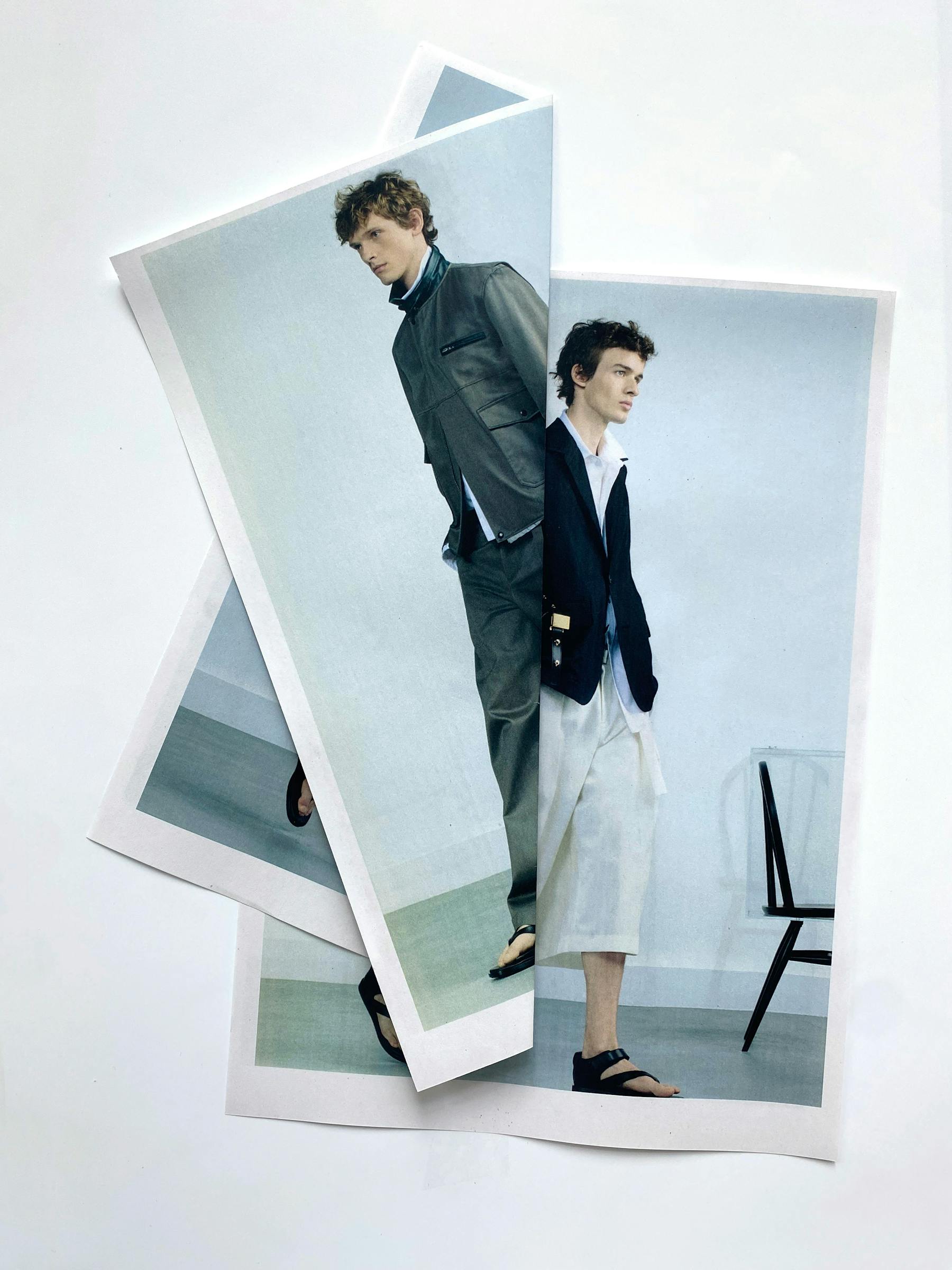
C. A. You understand the brand, and you understand how I think. We tend to do things that are very unique and different from the norm. It's important to always strike the right balance between stability and chaos. I try not to do what people expect, but instead find a different approach that offers an unexpected view. I follow my intuition in the moment. I might design something strange because I don’t want to sell too much or be too commercialized. But I am also the CEO and the owner of the company, and the business is difficult. The creation always has to win over the commercial.
D. T. I've been thinking about some of the more feminine sides of Sacai, because it's a brand that is linked to the street, linked to casualness, to easy everyday style. But there's also a very sophisticated, elegant woman in Sacai. Some of the very first buyers and tastemakers who picked up Sacai were the kinds of women that had previously worn Chanel or more classic brands. They were suddenly wearing Sacai, and it became something of a cult. I'm sure your own femininity is an inspiration, but is there also a connection to French style, to couture mixed with a more street sensibility?
C. A. Before I started Sacai in the late ’90s, I felt like feminine clothes were either very sexy or very elegant, but not both. Perhaps this is a Japanese thing, but today we tend to wear the same clothes from morning until evening. Back then, more people would change their clothes to go to dinner or change to go to a party. The idea of being able to dress for the whole day in the same clothes that worked for all different kinds of occasions was something that I wanted to design. You can take the metro in them, but you can also go to a party or dinner. That is modern femininity, and that led to the concept of Sacai. A new, modern, practical, but very unique daily wear, designed for many different occasions and personalities.
D. T. I feel like the idea of designing around the body and creating constant forward motion is very much part of Sacai. How do you approach designing in relation to the body? How does movement come into the design process?
C. A. Hybridization is one of our key elements. Designing in 360° is also very important for Sacai, and I think that 360° design is related to motion. The body is never just flat. In women's clothes especially, the patterns are very technical. The clothes may look a bit complicated or difficult to wear, but when your body is in them, even though they are structured, they are very wearable and comfortable. I am very proud of that, of having this very difficult technique that is still very wearable.
D. T. Fabrics in your collections have often been made with important suppliers like Thomas Mason shirting and Loro Piana as well.
C. A. Our relationship with suppliers is very special to Sacai. We're always innovating with new fabrics and trying things that are very technical but may not be commercially successful. For example, I may ask for something to look stiff, but in fact be soft. Many of our suppliers are very supportive in trying to make something special and new. We try to just let them innovate, although the goal is also to be mutually successful in the commercial aspect. That is important in order to continue the relationship.
D. T. With hybridization, you often have to connect different fabrics together. Sometimes you felt wool with silk, for example. Does this craftsmanship allow you to make your hybrid work more developed?
C. A. Everything starts in the atelier. I first had the idea of mixing materials in the second year of the brand. Now it's one of our key elements. When I first mixed chiffon and knit, many of the factories refused to do it. At that time, they didn't believe that we would become who we are now. Now, there are so many brands mixing fabrics together, and it has become quite normal. The suppliers that we still work with are great.
D. T. Regarding some of the non-fashion objects that you have made and worked with, I'm curious about the way you see ‘space.’ I wanted to mention Gelchop as a long collaboration, and in general the Tokyo store designed with Yusuke Seki, as well as your hybrid approach applied to furniture and jewellery. You’ve also made Cartier pieces that are stretched and changed into something very new, though still very luxurious. They are also very feminine. There’s a sense that Sacai creates a twist, almost a glitch in reality, in the way people perceive objects, as if seen through a magnifying glass or a surreal lens. The Cartier Trinity ring is turned into a much bigger piece and stretched around the fingers. A classical antique lamp is encircled with a halo of Perspex. In the store, a Persian carpet is cut into many layers, forming a kind of staircase.
C. A. In a similar way to your examples, fragrance is something that we don't have at the moment but would like to potentially explore, because it would allow us to express who we are beyond just creating fashion. I would be hands-on to be sure that the details reflect who we are. I remember when I first made a sweater where the front was a men's sweater and the back was a chiffon plaid piece, which is womenswear. Everybody was really surprised because they didn't really understand what it was. Or even the Nike Waffle that combined two different types of shoes, it was something that no one had ever seen. For any project, we will continue to make things that are unexpected.


